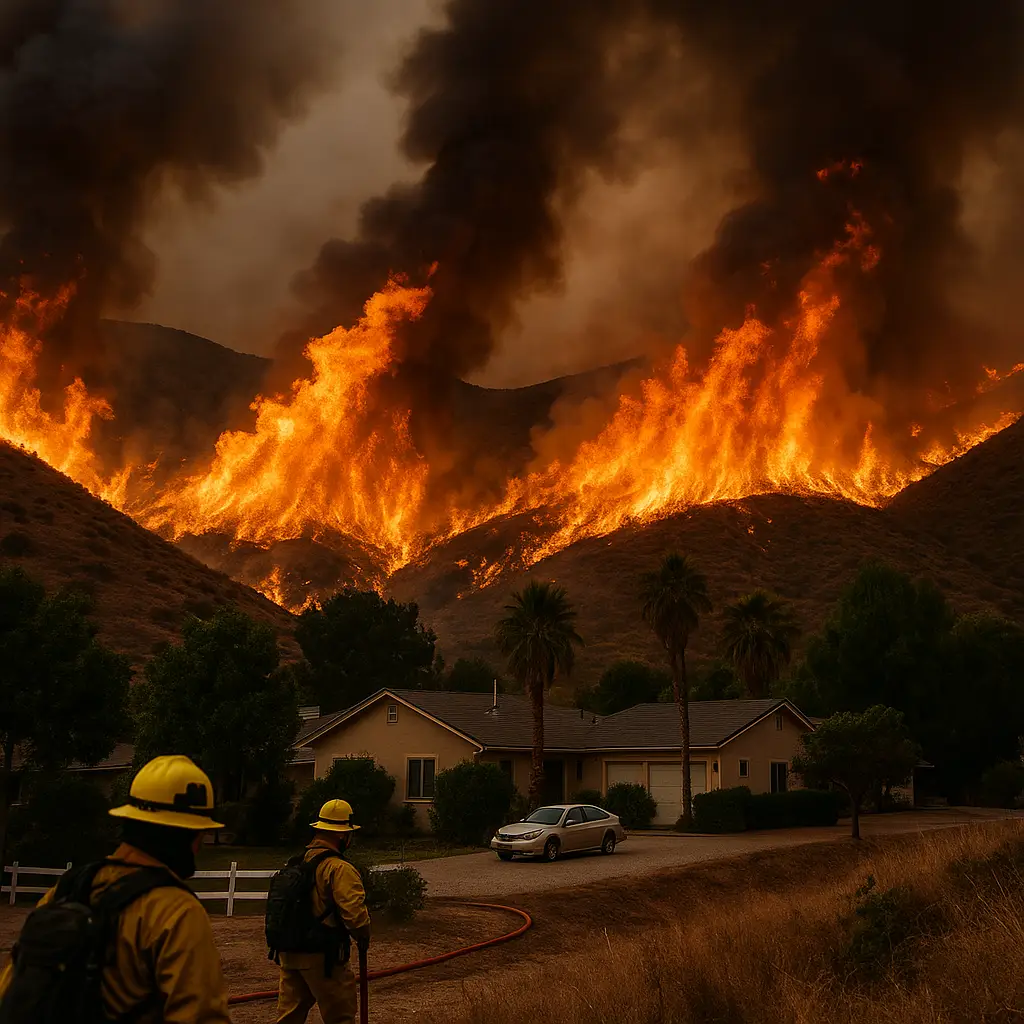The California wildfire Canyon Fire 2025 erupted in the mountains north of Los Angeles on August 7, 2025. Within hours, 30 acres expanded into more than 4,800, forcing entire communities near Lake Castaic to evacuate. This fire has quickly become one of the most dangerous events of the season, striking during California’s driest and windiest months.
California is no stranger to wildfires. Yet in recent years, they have grown faster, burned hotter, and behaved more unpredictably. This is no natural fluke. It’s the result of climate extremes, reckless urban expansion, and infrastructure stretched beyond its limits. The Canyon Fire’s August timing — when bone-dry landscapes and winds can turn a spark into disaster — made it especially devastating.
Emergency Declared Amid California Wildfire Canyon Fire 2025
Kathryn Barger, chair of the Los Angeles County Board of Supervisors, swiftly declared a local emergency. The move was not symbolic; it cut through bureaucracy, secured additional resources, and gave more support to over 400 firefighters battling the blaze with aircraft and bulldozers.
The California wildfire Canyon Fire 2025 has already crossed county lines, spreading from eastern Ventura to the western edges of Castaic. The cause is still unknown, but its rapid spread leaves no time for investigation while lives and property remain at risk.
Human and Animal Toll in the Canyon Fire 2025
Images from the fire zone capture its harsh reality: firefighters silhouetted against walls of flame, hillsides glowing like molten metal, and a lone cow fleeing smoke in Ventura County. These moments reveal the human and animal struggles that official bulletins rarely show.
Evacuations are in place from CAS-ROMERO to CAS-VALVERDE-D. Val Verde is sealed off to outsiders, with access granted only to residents. Thousands now wonder how many more wildfire seasons they can survive before “home” becomes just a memory.
Why California Wildfire Canyon Fire 2025 Was Predictable
This wildfire is part of a troubling pattern: hotter summers, longer droughts, and relentless housing expansion into high-risk zones. Firefighters today are battling not only nature but decades of political and economic choices that increased vulnerability.
Officials repeat the same goal — protect lives, homes, and infrastructure — but the deeper question remains: how many more Canyon Fires must burn before prevention is as urgent and well-funded as response?
The Policy Shift California Needs
The California wildfire Canyon Fire 2025 should be a turning point. To break the cycle, the state must:
- Restrict development in fire-prone areas (California Department of Forestry and Fire Protection)
- Fund year-round vegetation management, not just seasonal firefighting
- Hold utilities and developers accountable for fire risks
Without change, California’s “high-risk” map will eventually cover the entire state.
Conclusion
The California wildfire Canyon Fire 2025 is burning now, but the choices that fueled it were made years ago. Unless the state shifts from reactive heroics to proactive prevention, wildfire season will become a permanent way of life. Hope is not a strategy — action is overdue.
Internal link example: For related analysis, read our piece on California’s 2024 wildfire prevention failures.
